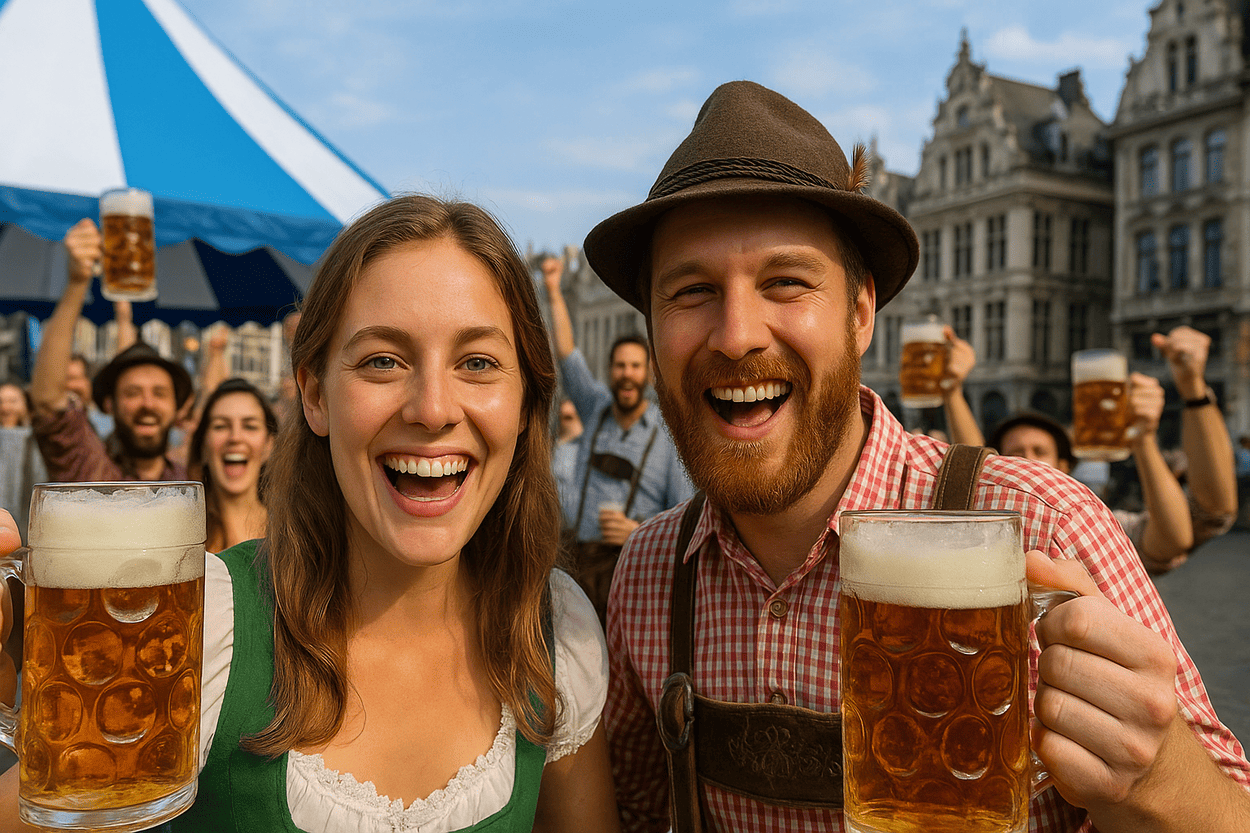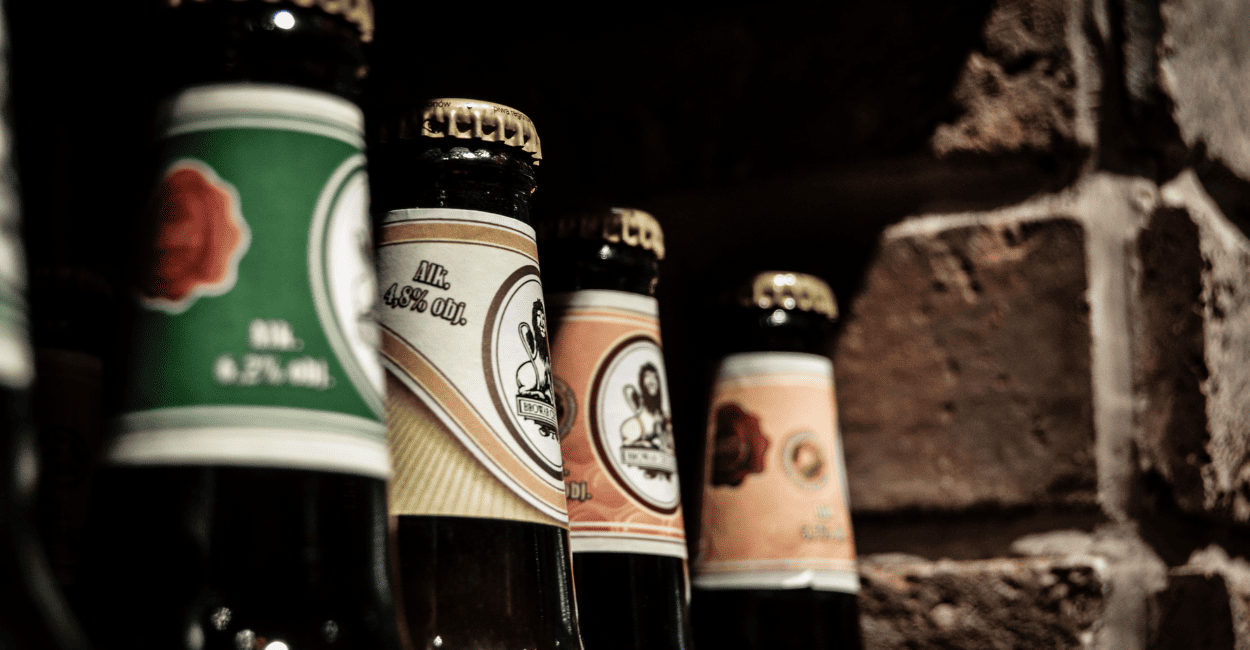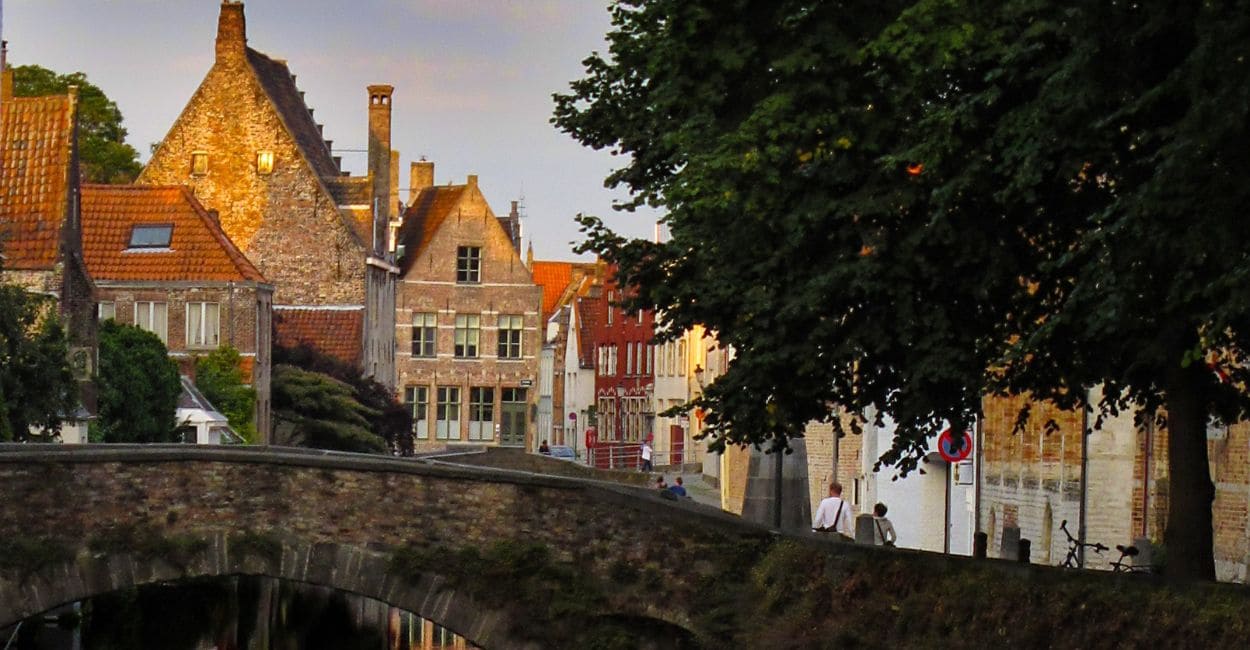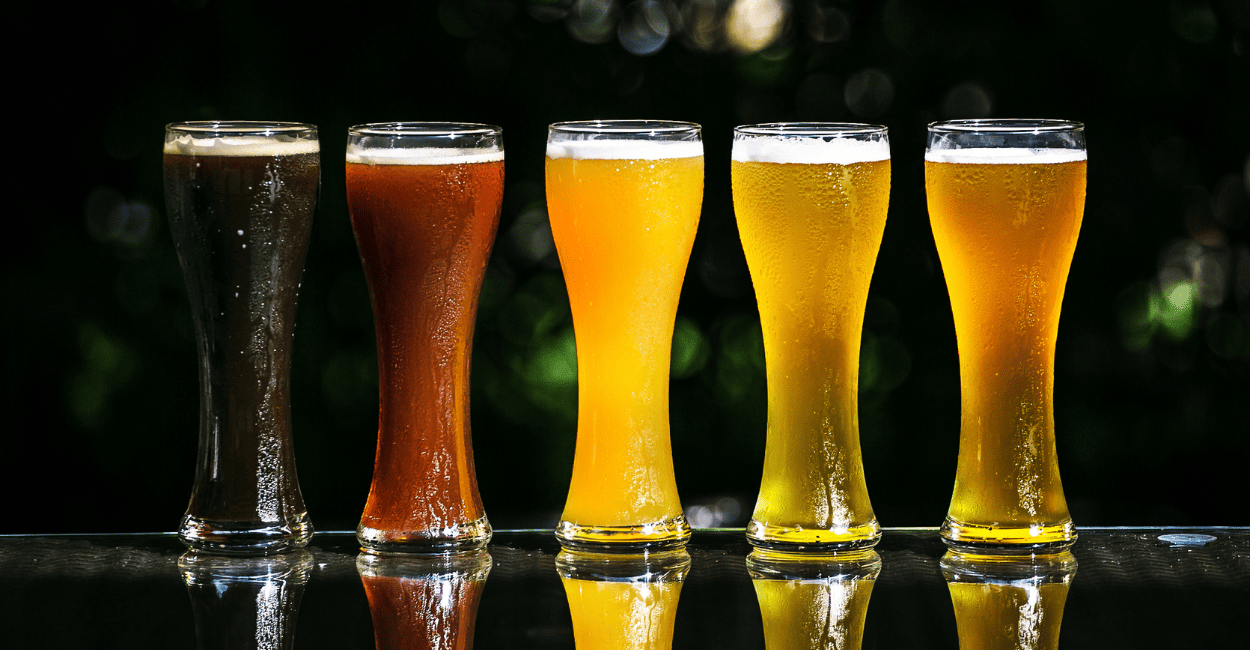Things to Do in Brussels: Complete Itinerary with Unmissable Tips
If you’re wondering what to do in Brussels, get ready to discover a city that blends history, culture, and unique flavors. Brussels, the capital of Belgium, is much more than the headquarters of the European Union: it’s a destination full of fascinating attractions, from medieval squares to culinary experiences that will win you over. In this guide, we’ll show you how to make the most of your trip, whether you’re staying for a weekend or for a longer visit.
With more than 1,000 years of history, Brussels is a city that surprises you at every turn. Here, you’ll find everything from iconic landmarks like the Atomium and the Grand Place to authentic local experiences, such as tasting craft beers in historic bars or getting lost among the comic strip murals scattered throughout the city. We’ll guide you through a complete itinerary, with practical tips and suggestions that will turn your trip into an unforgettable experience.
Why Should Brussels Be on Your Travel Itinerary?

Brussels is one of those destinations that pleases every type of traveler. Whether you’re a history enthusiast, a foodie, or an urban explorer, the city has something special to offer. Known as the “Capital of Europe,” Brussels is home to key European Union institutions, but it’s also a place where tradition and modernity blend seamlessly.
On top of that, the city is a true gastronomic paradise. Picture yourself savoring fresh waffles, artisanal chocolates, and award-winning beers while wandering through charming streets. Brussels is also a compact city, making it easy to explore on foot and allowing you to enjoy every moment without wasting time on long commutes.
How Many Days to Stay in Brussels? Planning Your Trip
To explore the essentials of Brussels, we recommend at least 2 to 3 days. This amount of time allows you to visit the main attractions, such as the Grand Place, the Atomium, and the Parc du Cinquantenaire, as well as enjoy the local cuisine and wander through some of the less touristy neighborhoods.
If you have more time, you can include day trips to nearby cities like Bruges and Ghent, which perfectly complement your experience in Belgium. No matter how long you stay, Brussels is sure to surprise you.
2-Day Itinerary in Brussels: The Essentials to Make the Most of Your Trip

If you only have a weekend in Brussels, don’t worry: it’s possible to experience the best of the city in just 2 days. We’ll guide you through an itinerary that combines iconic attractions, local experiences, and moments of relaxation, ensuring you make the most of every minute.
- Check it out: Historical Tour with Chocolate and Waffle Tasting
Day 1: Exploring the Historic Center
Start your day in the heart of Brussels: the Grand Place. This square is a true postcard of the city, with historic buildings that tell centuries of history. Then, head to the Manneken Pis, Belgium’s most famous statue, and discover Jeanneke Pis, his lesser-known “sister.”
In the afternoon, explore the Galeries Royales Saint-Hubert, a historic shopping arcade filled with chocolate shops and charming cafés. End the day at Mont des Arts, where you can enjoy a stunning view of the city as the sun sets.
The Grand Place: The Heart of Brussels
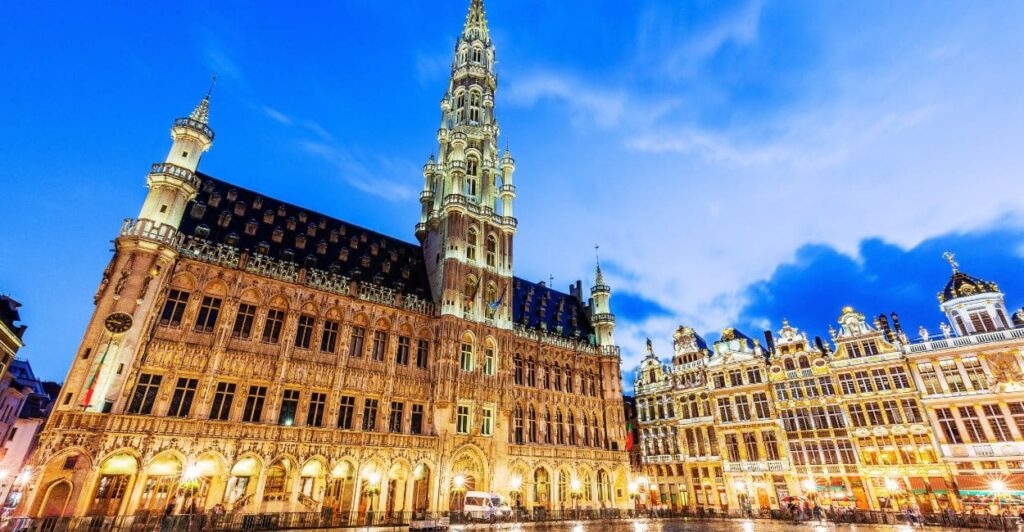
The Grand-Place is the heart of Brussels and the perfect starting point for any itinerary in the city. Considered one of the most beautiful squares in Europe, it is surrounded by ornate buildings that showcase centuries of history, from Gothic to Baroque styles. Its vibrant atmosphere—with charming cafés, flowers, and seasonal events—makes the Grand Place feel like something out of a fairy tale. At night, the special lighting transforms the square into a true spectacle of lights and colors.
Among the highlights of the Grand Place are the Maison du Roi, which houses the Museum of the City of Brussels, and the imposing Hôtel de Ville, the city’s town hall with its 96-meter Gothic tower. These buildings stand as witnesses to Brussels’ rich history and its political and cultural importance over the centuries. A stroll through the Grand Place is an immersion into the very essence of the Belgian capital and undoubtedly one of the most memorable moments of your trip.
Manneken Pis and Jeanneke Pis: The City’s Most Curious Statues
The Manneken Pis may be small in size, but it’s huge in popularity and cultural significance. This 55 cm bronze statue of a little boy peeing is one of Brussels’ most beloved symbols, representing Belgian irreverence and humor. What many people don’t know is that the Manneken Pis has a wardrobe with over 900 outfits, which are changed on special occasions—making it an attraction that’s always full of surprises.
Jeanneke Pis, his female counterpart, is less well-known but just as quirky. Located in an alley near the Delirium Bar, she completes the family of “peeing statues” and shows that Brussels isn’t afraid to have fun with its traditions. Both statues are must-see stops for anyone wanting to understand the lighthearted spirit of the Belgian capital.
Galeries Royales Saint-Hubert: Shopping and Chocolates
The Galeries Royales Saint-Hubert are a true paradise for shopping and gastronomy lovers. Opened in 1847, these covered arcades are a landmark of Belgian elegance, with a glass roof that bathes the corridors in light, lined with luxury shops, charming boutiques, and renowned chocolatiers such as Neuhaus and Godiva. In addition to being a great place to pick up souvenirs and indulge in Belgium’s famous chocolates, the galleries also house cozy cafés and historic theaters, creating a unique atmosphere that blends culture, gastronomy, and sophistication.
Mont des Arts: Stunning Views and Culture
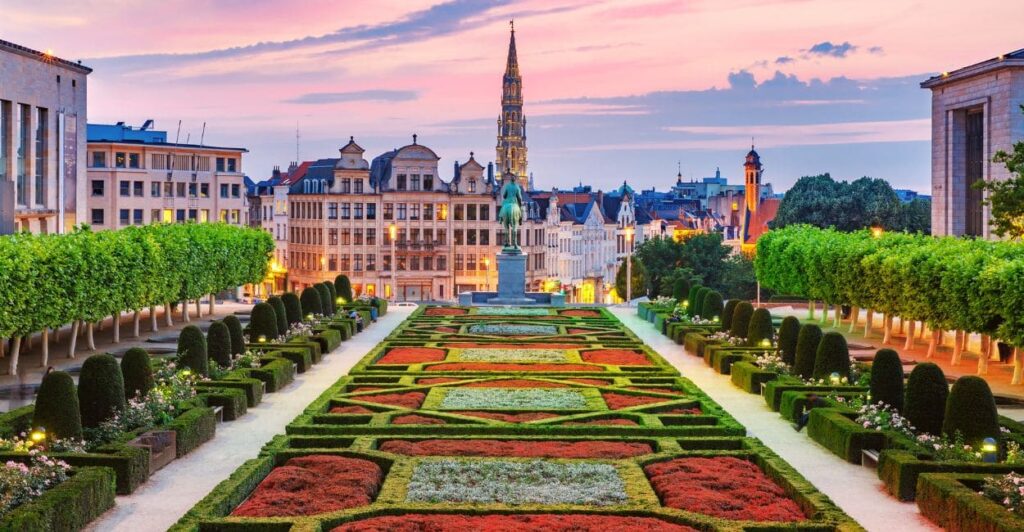
The Mont des Arts is a cultural complex that blends history, art, and nature in one place, offering one of the best panoramic views of Brussels. Its beautifully maintained gardens and central staircase are perfect for a peaceful break while admiring the cityscape. The area is also home to important museums, such as the Magritte Museum, dedicated to the famous Belgian surrealist artist, and the Musical Instruments Museum, which showcases an impressive collection of instruments. The Mont des Arts is an unmissable spot for anyone seeking both culture and beauty in Brussels.
Day 2: Modern Attractions and Surroundings
On your second day, explore the modern side of Brussels. Start with the Atomium, a futuristic structure that offers panoramic views of the city. Then, head to Mini-Europe, a theme park that showcases miniature replicas of Europe’s most iconic monuments.
In the afternoon, discover the European Quarter, home to the European Union institutions, and end the day at Parc du Cinquantenaire, a beautiful green space perfect for relaxing.
Atomium:The Icon of Belgian Architecture

The Atomium is one of Brussels’ most iconic attractions and a true symbol of the city. Built for the 1958 World Expo, this futuristic structure represents an iron crystal magnified 165 billion times, with its nine connected spheres that light up brilliantly at night. More than just an architectural masterpiece, the Atomium offers an interactive experience, with exhibitions about its history and escalators that connect one sphere to another.
Going up to the top of the Atomium is an unmissable experience. From there, you’ll enjoy an incredible panoramic view of Brussels, with Mini-Europe Park right next door. The combination of art, science, and stunning scenery makes the Atomium a must-visit attraction that appeals to all types of travelers, from families to photography enthusiasts. Be sure to include it in your itinerary!
Mini-Europe: A Tour of the Continent in Miniature
Mini-Europe is a charming theme park that takes you on a journey through Europe in miniature, with more than 350 iconic monuments recreated on a reduced scale. From Paris to Berlin, passing through London and Rome, you can admire detailed replicas of landmarks such as the Eiffel Tower, Big Ben, and the Acropolis—all in one place.
With interactive activities and insights into the history and culture of each country, the park is a fantastic option for families and for anyone who wants to get a taste of every corner of Europe without leaving Brussels. A fun and educational experience for all ages!
To save time in line, it’s best to purchase your tickets for the Atomium and Mini-Europe in advance. The price is exactly the same as at the ticket office, and if you need to change your plans, you can cancel for free up to 24 hours beforehand.
European Quarter: The Political Center of the EU
The Europeu Quaeter is the political heart of the European Union, home to key institutions such as the European Parliament, where decisions that shape the entire continent are made. In addition, the Parlamentarium, an interactive museum, offers an immersive experience that explains how the EU works in a dynamic and accessible way. For those interested in politics, history, and the future of Europe, this visit is a unique opportunity to understand Brussels’ role on the global stage. Without a doubt, it’s one of the best things to do in Brussels for anyone seeking knowledge and culture.
Parc du Cinquantenaire: History and Nature
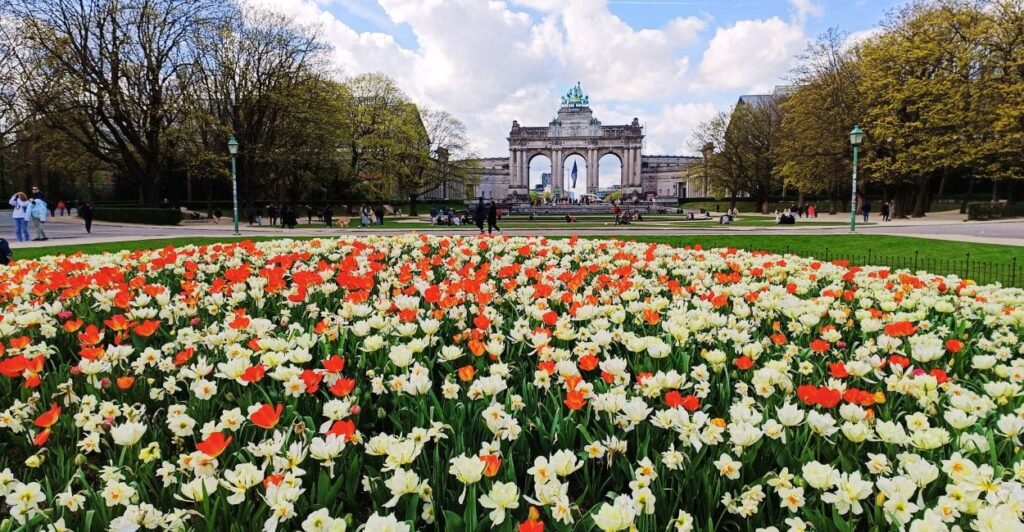
O Parc du Cinquantenaire is a destination that combines nature, history, and tranquility. One of the largest and most beautiful parks in the city, it’s famous for its impressive triumphal arch and impeccably maintained gardens. Perfect for an outdoor picnic, a relaxing walk, or simply admiring the panoramic views of the city, the park is also home to fascinating museums such as the Royal Museum of the Armed Forces and Military History and the Art & History Museum. Whether you’re looking to unwind or explore, the Parc du Cinquantenaire is a must-see stop on your list of things to do in Brussels.
Unique Experiences in Brussels: Go Beyond the Obvious
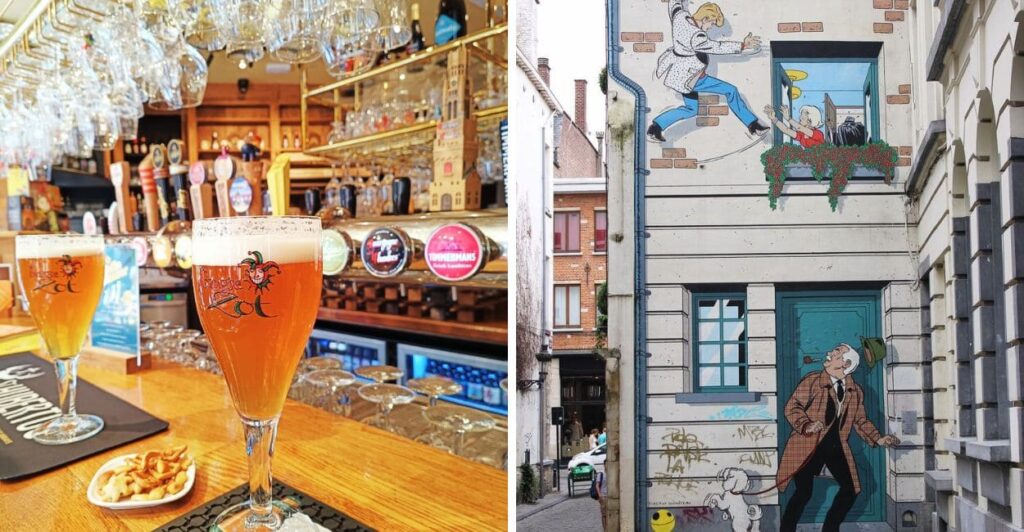
Brussels is a city full of surprises, and for those who want to go beyond the traditional tourist attractions, there are plenty of unique experiences that will make your trip even more special. From local markets to cultural festivals, the city offers opportunities to dive into everyday Belgian life and discover its most authentic side.
One of the best ways to experience the real Brussels is by exploring its markets. The Marché du Midi, for example, is one of the largest open-air markets in Europe and a great spot to sample local products and interact with residents. Another unmissable experience is following the Comic Book Route, which takes you past colorful murals scattered throughout the city, paying tribute to characters like Tintin and the Smurfs.
And of course, we can’t forget about beer! Brussels is the perfect place to taste some of the world’s finest brews. Visit historic bars like Delirium Café, which offers more than 2,000 labels, or join a guided tasting to learn about the different styles and flavors.
Local Markets: Marché du Midi and Its Delights
The Marché du Midi is a paradise for food lovers. Located near the Brussels-Midi train station, the market takes place on Sundays and offers an impressive variety of fresh products such as cheeses, fruits, vegetables, and spices. It’s also a great spot to try traditional Belgian dishes like moules-frites (mussels with fries) and carbonade flamande (a beef stew made with beer).
Beyond the Marché du Midi, it’s worth visiting the Marché aux Puces, a flea market where you can find antiques, rare books, and curious objects. It’s the perfect place to pick up a unique souvenir from Brussels.
Comic Book Route: The Murals of Tintin and Other Characters
Brussels is known as the comic book capital, and this is evident in the more than 50 murals scattered throughout the city. The Comic Book Route is a fun way to explore Brussels while discovering works of art that pay tribute to iconic characters like Tintin, Lucky Luke, and the Smurfs.
One of the most famous murals is Tintin’s, located near the Grand Place. Another highlight is the Broussaille mural, depicting a couple strolling through the streets of Brussels. For comic book fans, a visit to the Centre Belge de la Bande Dessinée (Belgian Comic Strip Center) is a must.
Belgian Beer Tasting: Where and How to Enjoy It
Belgium is famous for its beers, and Brussels is the perfect place to try some of the best. With more than 1,500 varieties, Belgian beers range from classic Trappist brews to fruity lambics.
One of the best places to start your beer tasting is Delirium Café, which holds the world record for the largest variety of beers. Another great option is Moeder Lambic, a bar specializing in craft brews. If you want to learn more about the brewing process, join a guided tasting or visit a local brewery such as Cantillon, famous for its spontaneously fermented beers.
Festivals and Cultural Events: Dive into Local Life
Brussels is a vibrant city with a cultural calendar full of festivals and events throughout the year. One of the most famous is the Flower Carpet, held every two years in the Grand Place, which transforms the square into a massive floral tapestry. Another unmissable event is the Brussels Jazz Weekend, bringing together artists from around the world for free performances across the city. During winter, the Christmas Market enchants visitors with food stalls, ice skating, and sparkling decorations.
Where to Stay in Brussels: Best Neighborhoods and Accommodations
Choosing the right place to stay in Brussels can make all the difference in your trip. The city offers options for every taste and budget, from luxury hotels in the historic center to cozy hostels in bohemian neighborhoods.
The historic center is the ideal choice for those who want to be close to the main attractions, such as the Grand Place and the Manneken Pis. The European Quarter, on the other hand, is a great option for those looking for tranquility and easy access to EU institutions. For a more authentic experience, consider staying in Ixelles, a lively neighborhood full of bars, restaurants, and trendy shops.
Historic Center: Convenience and Charm
Staying in Brussels’ historic center means being just steps away from attractions like the Grand Place, the Manneken Pis, and the Galeries Royales Saint-Hubert. Here, you’ll find a wide range of hotels, from budget-friendly options to luxury establishments such as Hotel Amigo, which combines comfort and elegance.
Beyond convenience, the historic center offers a charming atmosphere, with cobblestone streets and historic buildings. It’s the perfect spot for those who want to immerse themselves in the city’s history and culture.
European Quarter: Modernity and Tranquility
The European Quarter is a great choice for those seeking tranquility and easy access to the institutions of the European Union. Here, you’ll find modern, well-equipped hotels along with a variety of restaurants and cafés.
One of the advantages of staying in the European Quarter is its proximity to the Parc du Cinquantenaire, a green space perfect for walks and picnics. The neighborhood is also well connected to the historic center by metro and bus.
Ixelles: Bohemian and Full of Life
If you prefer a more authentic and laid-back experience, Ixelles is the ideal neighborhood. Known for its vibrant nightlife, Ixelles is home to a wide range of bars, restaurants, and independent shops.
Here, you’ll find accommodation options for every budget, from affordable hostels to charming boutique hotels. Ixelles is also a great place to sample local cuisine, with a special highlight on international restaurants and cozy cafés.
Where to Eat in Brussels: Unmissable Gastronomy
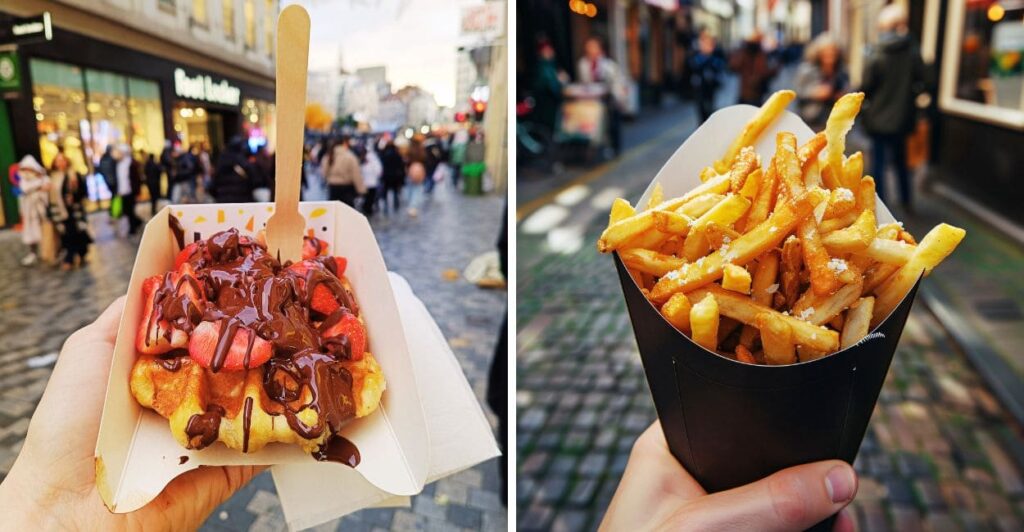
Food is one of the great highlights of Brussels. The city is famous for its waffles, chocolates, and beers, but it also offers a variety of traditional dishes that will win you over.
Waffles, Fries, and Chocolates: Where to Find the Best
Belgian waffles are truly irresistible, and you’ll find countless options throughout the city. For some of the best, head to Maison Dandoy, a traditional pastry shop that has been around since 1829. Another favorite is Le Funambule, known for its creative topping combinations.
Fries are a national passion, and you can’t miss trying frites served in paper cones. One of the best friteries in the city is Fritland, located near the Grand Place.
And of course, we can’t forget about chocolates. Brussels is home to some of the world’s finest chocolatiers, including Neuhaus, Godiva, and Pierre Marcolini. Visit their shops to sample the famous pralines and take home a delicious souvenir.
Bars and Pubs: Craft Beers and a Cozy Atmosphere
Brussels is the perfect destination for beer lovers, and its bars and pubs are an attraction in themselves. Delirium Café is one of the most famous, boasting more than 2,000 beer labels. Another great choice is Moeder Lambic, known for its focus on craft beers.
For a more intimate experience, visit À la Mort Subite, a historic bar that has preserved its 1920s atmosphere. Here, you can sample traditional beers such as gueuze and kriek.
Practical Tips for Visiting Brussels
Brussels is a compact and easy-to-explore city, but a few details can make all the difference in your experience. From the best ways to get there to how to get around, these tips will help you plan a worry-free trip.
How to Get to Brussels: Plane, Train, and Bus
Getting to Brussels is simple thanks to its central location in Europe. If you’re coming from another continent, Brussels Airport (BRU) is the main gateway, with direct flights from several cities around the world. For those already in Europe, the train is an excellent option. The city is well connected to capitals like Paris, Amsterdam, and London, with travel times between 1.5 and 2 hours.
Another budget-friendly alternative is the bus, especially for backpackers or travelers on a tighter budget. Companies like FlixBus offer routes from various European cities, with fares starting at €5. No matter which mode of transport you choose, you’ll be in the heart of Europe in just a few hours.
Getting Around the City: Metro, Tram, and On Foot
Brussels can largely be explored on foot, especially in the historic center, where most main attractions are close together. However, to reach farther spots like the Atomium, the metro and tram are excellent options. The public transport system is efficient and easy to use, with tickets costing around €2.80 per ride.
If you plan to use public transport frequently, consider getting a daily travel card or the Brussels Card, which includes unlimited public transport and entry to several museums. Walking, however, remains the best way to discover the city’s hidden gems, like the comic strip murals scattered around the streets.
Best Time to Visit: Weather and Seasonal Events
The best time to visit Brussels is between April and October, when the weather is milder and the city comes alive with outdoor festivals and events. Summer is especially lively, with pleasant temperatures and long days, perfect for exploring parks and squares.
In winter, the city transforms with its famous Christmas markets, which fill the Grand Place with lights and decorations. Although the cold can be intense, the charm of snow-covered streets and the festive atmosphere make up for it. If you enjoy cultural events, October is an interesting month, featuring the Flower Carpet at the Grand Place, held every two years.
What to Do Around Brussels? Day Trips
Brussels is an excellent starting point for exploring other Belgian and European cities. If you have a few extra days, don’t miss out on some day trips that will enrich your experience in Belgium.
Bruges the “Venice of the North”
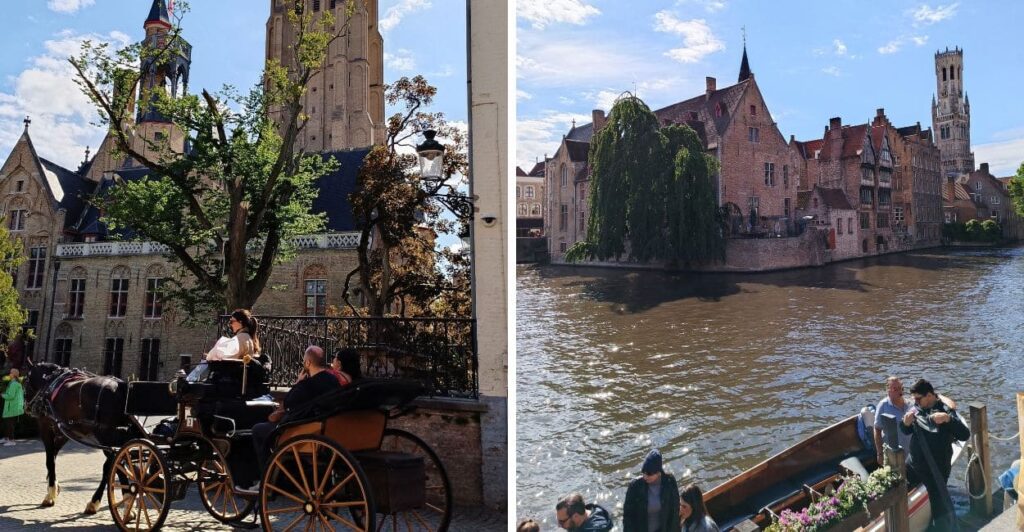
Known as the “Venice of the North,” Bruges is a must-visit destination just one hour by train from Brussels. With its picturesque canals, medieval architecture, and romantic atmosphere, the city feels like it came straight out of a fairy tale. Be sure to visit the Market Square (Markt), the Belfry of Bruges, and the Lake of Love (Minnewater).
Ghent: History and Stunning Architecture

Another Belgian gem well worth a visit, Ghent is just 30 minutes by train from Brussels. The city perfectly combines history and modernity, with highlights including the Castle of the Counts of Flanders and St. Bavo’s Cathedral, home to the famous painting The Adoration of the Mystic Lamb.
Antwerp: Capital of Diamonds and Fashion
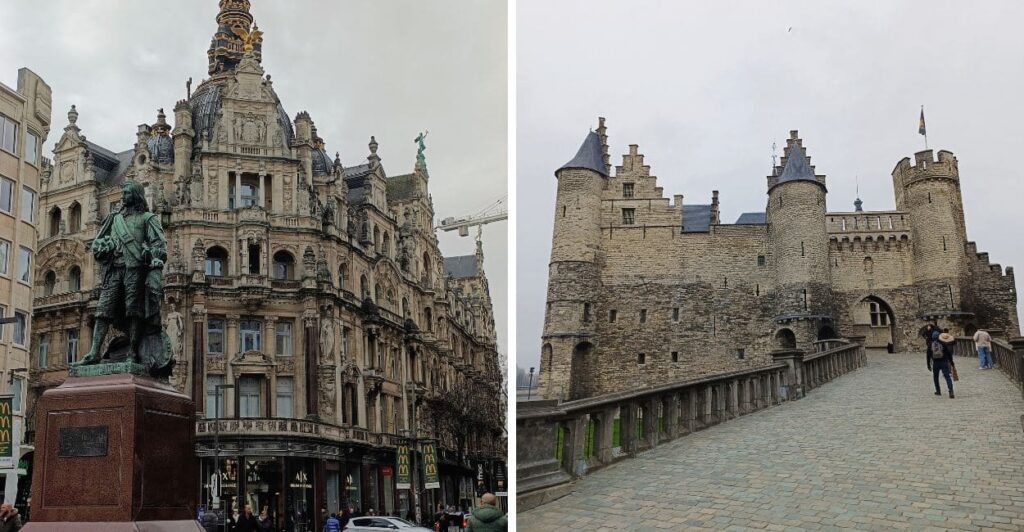
Just 40 minutes by train, Antwerp is a paradise for fashion and art lovers. Known as the diamond capital, the city is also home to works by Peter Paul Rubens and a vibrant cultural scene. Don’t miss the Antwerp Central Station, considered one of the most beautiful in the world.
Check Out: Tour from Brussels to Antwerp
Frequently Asked Questions About Brussels
Before heading to Brussels, it’s natural to have a few questions. Here are the answers to the most common ones about the city.
Is Brussels Safe for Tourists?
Yes, Brussels is considered safe for tourists. As in any large city, it’s important to take basic precautions, such as avoiding less busy areas at night and keeping an eye on your belongings in tourist spots. Overall, the city is calm and welcoming.
What’s the Best Way to Get Around the City?
The best way to get around Brussels depends on your itinerary. For the historic center, walking is the best option. For more distant attractions like the Atomium, the metro and tram are efficient and affordable. The Brussels Card can be a good choice if you plan to use public transport frequently and visit museums.
How Much Does a Trip to Brussels Cost?
The cost of a trip to Brussels varies depending on your travel style. On average, a day in the city can cost between €80 and €100 per person, including accommodation, food, and transport. Restaurants and attractions are reasonably priced, especially if you go for local options like the famous street fries.
What Are the Best Activities for Families?
Brussels is a great city for families, with attractions such as the Atomium, the Natural Sciences Museum, and Mini-Europe Park. Kids will also love the comic strip murals scattered across the city and, of course, the famous Belgian waffles.
Is It Worth Visiting Brussels in Winter?
Yes, visiting Brussels in winter can be a magical experience, especially at Christmas. The Christmas markets, ice-skating rinks, and the decorations in the Grand Place create a unique atmosphere. Despite the cold, the city remains lively and full of charm.




